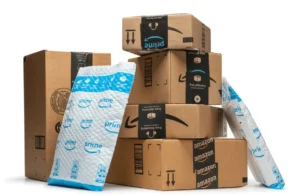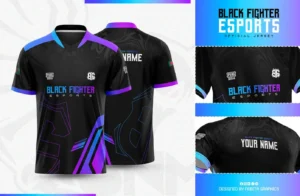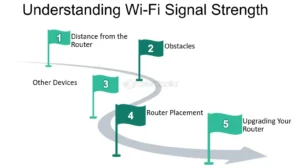Last updated on May 1st, 2025 at 04:43 am
In recent years, vintage jewelry has become more than just a fashion statement—it’s a full-fledged trend embraced by everyone from collectors and fashionistas to environmentally conscious consumers. Whether it’s a Victorian-era ring, a mid-century gold chain, or an Art Deco brooch, vintage jewelry offers a unique appeal that modern pieces often can’t match. This surge in popularity is reshaping the resale market, giving sellers a unique opportunity to capitalize on demand that shows no signs of slowing.
What sets vintage jewelry apart is the combination of craftsmanship, character, and sustainability. Many vintage pieces were made during times when jewelry was constructed by hand, using techniques and details rarely found in mass-produced items today. This makes each item not just a piece of jewelry, but a work of art with a history. At the same time, buyers are becoming more conscious of where their jewelry comes from. Vintage pieces offer a more sustainable and ethical choice, as no new mining or production is required to enjoy their beauty.
What Qualifies as Vintage?
The term “vintage” typically refers to jewelry that is at least 20 to 30 years old but not yet antique, which is defined as 100 years or older. This includes pieces from the 1990s and earlier, covering a wide range of styles and movements. Some of the most sought-after vintage periods include the Art Deco era of the 1920s and 30s, the retro styles of the 1940s and 50s, and the bold, colorful pieces of the 1970s and 80s.
What makes these eras so desirable is their distinctive design and historical relevance. Art Deco jewelry, for example, is known for geometric shapes and bold patterns, while mid-century modern pieces emphasize clean lines and vibrant gems. As trends cycle and nostalgia grows, these aesthetics are becoming fashionable again, creating high resale value for pieces that were once collecting dust in a drawer.
Why Buyers Are Willing to Pay a Premium
Today’s jewelry buyers aren’t just looking for sparkle—they’re seeking individuality, authenticity, and heritage. Vintage jewelry checks all three boxes. Modern consumers, especially Millennials and Gen Z, are drawn to items that stand out, tell a story, and reflect a sense of permanence. That’s why vintage engagement rings, statement necklaces, and signed designer pieces are in high demand.
Buyers are also motivated by the idea of investing in something with lasting value. Vintage jewelry, especially pieces made from high-quality gold or platinum and set with natural diamonds or gemstones, often holds its value well over time. Many collectors view these pieces not just as accessories but as wearable assets. For sellers, that means there’s a real opportunity to profit—especially if your piece is well-preserved and comes from a desirable design period or brand.
Designer names carry additional weight. Vintage jewelry from Cartier, Van Cleef & Arpels, Bulgari, and Tiffany & Co. can fetch significantly higher prices than unbranded items, particularly if they come with original packaging or documentation. These brands have a loyal collector base, and their older pieces are viewed as timeless icons in the jewelry world.
What Sellers Need to Know
If you have vintage jewelry you’re thinking about selling, the first step is to have it evaluated by a knowledgeable professional. Many older pieces include details that aren’t immediately obvious to the untrained eye, such as hallmark stamps, design signatures, or rare gem cuts. A proper appraisal can confirm the authenticity and estimated market value, and in many cases, uncover hidden worth.
Condition matters, but age alone is not a dealbreaker. Even slightly worn or tarnished vintage pieces may still attract buyers who value the story and craftsmanship. That said, if your item is damaged or missing stones, having it professionally cleaned or repaired can increase its appeal and sale price.
It’s also important to consider the timing. As of early 2025, demand for vintage jewelry remains strong. Fashion houses frequently feature vintage-inspired styles in their new collections, and secondhand luxury markets are growing across both in-store and online platforms. Platforms like Instagram, Etsy, and specialized resale sites have created more visibility and accessibility for vintage styles, contributing to a competitive market environment that favors sellers.
How to Sell Vintage Jewelry for Maximum Value
When selling vintage jewelry, your best chance at a strong return comes from working with buyers who understand the value of what you’re offering. Not all gold buyers or jewelry dealers specialize in vintage items, so it’s worth seeking out a buyer or appraiser who is familiar with the history and significance of older pieces. They’re more likely to recognize hallmarks, design periods, and brand value—and price the piece accordingly.
Make sure to gather any relevant documentation you have. Original boxes, receipts, or past appraisals can all enhance your item’s appeal. In some cases, just having the designer’s stamp or a certificate of authenticity can raise the offer considerably.
Be cautious of anyone offering a quick cash deal without a full evaluation, especially if the item is old, ornate, or designer-made. Get multiple quotes if possible, and don’t be afraid to walk away if something feels off. A reputable buyer will take the time to examine the piece thoroughly, explain how the offer is calculated, and make you feel comfortable throughout the process.
Final Thoughts
Vintage jewelry is having a moment—and for good reason. Its timeless beauty, ethical appeal, and enduring craftsmanship make it more desirable than ever. If you own vintage pieces that no longer suit your style or lifestyle, now could be the perfect time to let them shine again in the hands of someone new. With the right preparation, knowledge, and buyer, your vintage jewelry could be worth more than you imagined—both financially and symbolically.











